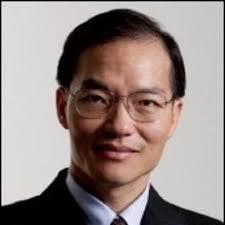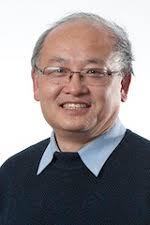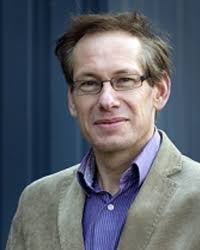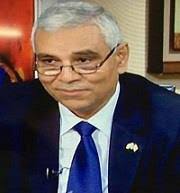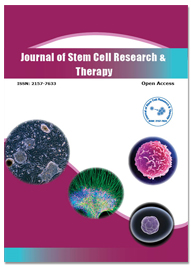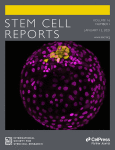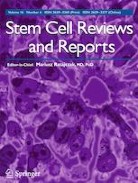Theme: Exploring Advancements in Stem Cell Research & Tissue Engineering, Regenerative Medicine
Renowned Speakers
Stem Cell Congress 2021
We invites all the participants from all across the globe to attend “16th World Congress on Tissue Engineering Regenerative Medicine and Stem Cell Research”, on May 12-13, 2022 at Berlin, Germany which includes prompt keynote presentations, poster presentations, and oral talks.
Stem cells are cells that have the potential to become many various or specialized cell types. Stem cells are often thought of as primitive, "unspecialized" cells that are ready to divide and become specialized cells of the body like liver cells, muscle cells, blood cells, and other cells with specific functions. Stem cells are referred to as "undifferentiated" cells because they have not yet committed to a developmental path that will form a specific tissue or organ. The process of changing into a specific cell type is known as differentiation. In some areas of the body, stem cells divide regularly to renew and repair the existing tissue.
This conference plays a Global platform for biomedical companies, start-ups, clinical research divisions, professionals, specialists, consultants, doctors, scholars and students to frame new relationship and strengthen the Knowledge. This is a great opportunity for all the delegates from Universities and Institutes to interact with the top grade world class Scientists. The particular participants can confirm their participation through Registrations. To explore More Regarding the Recent Research in Stem Cell its application attends Stem Cell Congress 2021.
About Organizers:
We are one of the leading Open Access publishers and organizers of international scientific conferences and events every year across USA, Europe & Asia. Events with over 600+ Conferences, 1200+ Symposiums and 1200+ Workshops on Medical, Pharma, Engineering, Science, Technology and Business with 700+ peer-reviewed open access journals in basic science, health, and technology.
Stem Cell Congress 2022 envisage not less than 300 participants throughout the sphere with contemplated triggering keynote lectures, plenary sessions, Oral Demonstrations and Poster Presentations. The appearing ambassadors involve Editorial Board Members of related Transnational Journals. This is an incomparable prospect for the delegates from Universities and Organizations to act together with the world class Experts.
Conferenceseries Llc Ltd cordially invites you to attend the “16th World Congress on Tissue Engineering Regenerative Medicine and Stem Cell Research”, which is forthcoming in the month of May 12-13, 2022 at Berlin, Germany.
Theme: "Recent Developments and New Innovations in the field of Stem Cell, Tissue Engineering and Regenerative Medicine"
Stem cells are multipotent cells capable of differentiating into a spread of cell types, including muscle cells. it had been originally hypothesized that stem cells implanted into the myocardial milieu would differentiate into cardiomyocytes to exchange those lost during the myocardial infarct . Animal studies demonstrated that somatic cell transplantation was safe and potentially efficacious. Bone-marrow-derived stem cells, endothelial progenitor cells and stem cells isolated from fat are the foremost widely used for implantation into the injured myocardium. The encouraging results of the preclinical studies triggered variety of clinical trials. the first clinical trials established the feasibility of somatic cell therapy to repair the injured myocardium.
Related Associations:
Asia/Pacific and Middle East: Australasian Society for Stem Cell Research; Korean Society for Stem Cell Research; The Japanese Society for Regenerative Medicine; Stem Cells Australia; National Stem Cell Foundation of Australia; Taiwan Stem Cell Society; Stemformatics.Org; Stem Cell Society Singapore.
Europe: Association of Cell Biology and Differentiation; Belgian Society for Stem Cell Research; Technology Networks Limited; Danish Stem Cell Society; French Society for Stem Cell Research; EuroStemCell; GermanStemCellNetwork; Norwegian Center for Stem Cell Research; Stem Cell Network. NRW
North & South America:California's Stem Cell Agency; New York Stated Stem Cell Science; The New York Stem Cell Foundation; Stem Cell Network; Brazilian Association of Cellular Therapy
Many more deaths occurred thanks to less availability of organs and donors. Tissue engineering/ Regenerative medicine opens the trail to make and generate desired tissue, cells also as Organs in Vitro to fight against the limitation and to make a replacement hope within the field of transplantation to fill the damaged and missing body parts. While rehabilitation engineering helps to revive normal function. Spanning use of cell, pharmacological and bioengineering technologies, alongside physical modalities and exercise.
- Whole organ engineering
- Extracellular matrix analog
- Auricular cartilage reconstruction
- Biomaterials and biopolymers for tissue engineering
- Hydrogels for tissue engineering
- Dermal tissue and Stem cell engineering
Related Associations:
Asia/Pacific and Middle East: Australasian Society for Stem Cell Research; Korean Society for Stem Cell Research; The Japanese Society for Regenerative Medicine; Stem Cells Australia; National Stem Cell Foundation of Australia; Taiwan Stem Cell Society; Stemformatics.Org; Stem Cell Society Singapore.
Europe: Association of Cell Biology and Differentiation; Belgian Society for Stem Cell Research; Technology Networks Limited; Danish Stem Cell Society; French Society for Stem Cell Research; EuroStemCell; GermanStemCellNetwork; Norwegian Center for Stem Cell Research; Stem Cell Network. NRW
North & South America:California's Stem Cell Agency; New York Stated Stem Cell Science; The New York Stem Cell Foundation; Stem Cell Network; Brazilian Association of Cellular Therapy
Stem Cells and Disease Modeling:
Human pluripotent stem cells (hPSCs) offer a useful model system for understanding the genetic basis of human cardiovascular diseases. Unlike nonhuman animal models, hPSCs are often tightly genetically matched to patients with disease. Previously, only in unusual circumstances was it feasible to review primary tissues like heart muscle and blood vessels obtained directly from living patients, and even in such circumstances, the quantity of tissue was limited. hPSCs represent a replacement approach that gives an unprecedented opportunity to review human cells that are matched to the patients of interest. Because they will be expanded into very large numbers and differentiated into a spread of cell types that are relevant to cardiovascular diseases—including cardiomyocytes, vascular endothelial and smooth muscle cells, and hepatocytes—hPSCs can in theory provide a limitless source of fabric with which to dissect the molecular underpinnings of the patient’s disease process within and beyond the circulatory system.
Related Associations:
Asia/Pacific and Middle East: Australasian Society for Stem Cell Research; Korean Society for Stem Cell Research; The Japanese Society for Regenerative Medicine; Stem Cells Australia; National Stem Cell Foundation of Australia; Taiwan Stem Cell Society; Stemformatics.Org; Stem Cell Society Singapore.
Europe: Association of Cell Biology and Differentiation; Belgian Society for Stem Cell Research; Technology Networks Limited; Danish Stem Cell Society; French Society for Stem Cell Research; EuroStemCell; GermanStemCellNetwork; Norwegian Center for Stem Cell Research; Stem Cell Network. NRW
North & South America:California's Stem Cell Agency; New York Stated Stem Cell Science; The New York Stem Cell Foundation; Stem Cell Network; Brazilian Association of Cellular Therapy
Biobanking is a process in which samples of body fluid or tissues are collected for research use to improve health and disease. Other information’s, such as height, weight and any questions regarding health also be recorded to provide the context for the samples. Often the samples are kept for long time or for several years, depending on the study, so that long term future research can be carried out. The researchers may follow up the health of the participants by looking at their past and future medical records, but only if people have given them permission to do.
Related Associations:
Asia/Pacific and Middle East: Australasian Society for Stem Cell Research; Korean Society for Stem Cell Research; The Japanese Society for Regenerative Medicine; Stem Cells Australia; National Stem Cell Foundation of Australia; Taiwan Stem Cell Society; Stemformatics.Org; Stem Cell Society Singapore.
Europe: Association of Cell Biology and Differentiation; Belgian Society for Stem Cell Research; Technology Networks Limited; Danish Stem Cell Society; French Society for Stem Cell Research; EuroStemCell; GermanStemCellNetwork; Norwegian Center for Stem Cell Research; Stem Cell Network. NRW
North & South America:California's Stem Cell Agency; New York Stated Stem Cell Science; The New York Stem Cell Foundation; Stem Cell Network; Brazilian Association of Cellular Therapy
Stem Cell & Regenerative Medicine research and development:
Regenerative medicine is an interdisciplinary field that seeks to develop the science and tools that can help repair or replace damaged or diseased human cells or tissues to restore normal function, and holds the promise of revolutionising treatment within the 21st century. It may involve the transplantation of stem cells, progenitor cells or tissue, stimulation of the body's own repair processes, or the use of cells as delivery-vehicles for therapeutic agents such as genes and cytokines. All regenerative medicine strategies depend upon harnessing, stimulating or guiding endogenous developmental or repair processes. Accordingly, somatic cell research plays a central role in regenerative medicine, which also spans the disciplines of tissue engineering, developmental cell biology, cellular therapeutics, gene therapy, biomaterials (scaffolds and matrices), chemical biology and nanotechnology. Promoting somatic cell research, regenerative medicine and advanced therapeutics more broadly may be a priority for us and for the united kingdom government.
Related Associations:
Asia/Pacific and Middle East: Australasian Society for Stem Cell Research; Korean Society for Stem Cell Research; The Japanese Society for Regenerative Medicine; Stem Cells Australia; National Stem Cell Foundation of Australia; Taiwan Stem Cell Society; Stemformatics.Org; Stem Cell Society Singapore.
Europe: Association of Cell Biology and Differentiation; Belgian Society for Stem Cell Research; Technology Networks Limited; Danish Stem Cell Society; French Society for Stem Cell Research; EuroStemCell; GermanStemCellNetwork; Norwegian Center for Stem Cell Research; Stem Cell Network. NRW
North & South America:California's Stem Cell Agency; New York Stated Stem Cell Science; The New York Stem Cell Foundation; Stem Cell Network; Brazilian Association of Cellular Therapy
COVID-19 and Convalescent Plasma:
The use of convalescent plasma (CP) collected from previously infected individuals to passively transfer antibodies so as to guard or treat humans dates back almost 100 years. Results from small case series during the prior MERS and SARS coronavirus outbreaks suggested that CP is safe and should confer clinical benefits, including faster viral clearance, particularly when administered early within the disease course1. The overwhelming majority of patients who get over COVID-19 illness develop circulating antibodies to varied SARS-CoV-2 proteins 2-3 weeks following infection, which are detectable by ELISA or other quantitative assays and sometimes correlate with the presence of neutralizing antibodies.
Donations can occur as frequently as weekly for several months before antibody titers begin decreasing. Allowed donation frequency varies between blood centers. Listed below are some sites for referral of potential donors:
• AABB: Information about convalescent plasma donation and a feature that helps potential donors locate AABB-accredited donation sites.
• FDA Donate COVID-19 Plasma: Lists places to donate convalescent plasma for transfusion or for manufacturing of hyperimmune globulin.
• National COVID-19 Convalescent Plasma Project
Related Associations:
Asia/Pacific and Middle East: Australasian Society for Stem Cell Research; Korean Society for Stem Cell Research; The Japanese Society for Regenerative Medicine; Stem Cells Australia; National Stem Cell Foundation of Australia; Taiwan Stem Cell Society; Stemformatics.Org; Stem Cell Society Singapore.
Europe: Association of Cell Biology and Differentiation; Belgian Society for Stem Cell Research; Technology Networks Limited; Danish Stem Cell Society; French Society for Stem Cell Research; EuroStemCell; GermanStemCellNetwork; Norwegian Center for Stem Cell Research; Stem Cell Network. NRW
North & South America:California's Stem Cell Agency; New York Stated Stem Cell Science; The New York Stem Cell Foundation; Stem Cell Network; Brazilian Association of Cellular Therapy
Cells are the essential building blocks of all living things, and genes are often found deep within cells. Genes are small sections of DNA that carry genetic information and directions for creating proteins, which help build and maintain the body. Every person has around 20,000 genes and two copies of every of their genes—one from each parent. Small variations in genes end in differences in people’s appearance and, potentially, health. Genetic diseases happen when a critical piece or whole section of DNA is substituted, deleted or duplicated. These changes are called genetic mutations. Some serious genetic diseases caused by genetic mutations are often passed to future generations.
Related Associations:
Asia/Pacific and Middle East: Australasian Society for Stem Cell Research; Korean Society for Stem Cell Research; The Japanese Society for Regenerative Medicine; Stem Cells Australia; National Stem Cell Foundation of Australia; Taiwan Stem Cell Society; Stemformatics.Org; Stem Cell Society Singapore.
Europe: Association of Cell Biology and Differentiation; Belgian Society for Stem Cell Research; Technology Networks Limited; Danish Stem Cell Society; French Society for Stem Cell Research; EuroStemCell; GermanStemCellNetwork; Norwegian Center for Stem Cell Research; Stem Cell Network. NRW
North & South America:California's Stem Cell Agency; New York Stated Stem Cell Science; The New York Stem Cell Foundation; Stem Cell Network; Brazilian Association of Cellular Therapy
Innovative applications of cell therapy products (CTPs) derived from human pluripotent stem cells (hPSCs) in regenerative medicine are currently being developed. The presence of residual undifferentiated hPSCs in CTPs may be a quality concern related to tumorigencity. Here, we show a completely unique approach for direct and sensitive detection of a trace amount of undifferentiated human induced pluripotent stem cells (hiPSCs) employing a highly efficient amplification. Essential 8 medium better facilitated the expansion of hiPSCs dissociated into single cells on laminin-521 than in mTeSR1 medium. hiPSCs cultured on laminin-521 in Essential 8 medium were maintained in an undifferentiated state and they maintained the ability to differentiate into various cell types. Essential 8 medium allowed robust hiPSC proliferation plated on laminin-521 at low cell density, whereas mTeSR1 didn't enhance the cell growth.
Related Associations:
Asia/Pacific and Middle East: Australasian Society for Stem Cell Research; Korean Society for Stem Cell Research; The Japanese Society for Regenerative Medicine; Stem Cells Australia; National Stem Cell Foundation of Australia; Taiwan Stem Cell Society; Stemformatics.Org; Stem Cell Society Singapore.
Europe: Association of Cell Biology and Differentiation; Belgian Society for Stem Cell Research; Technology Networks Limited; Danish Stem Cell Society; French Society for Stem Cell Research; EuroStemCell; GermanStemCellNetwork; Norwegian Center for Stem Cell Research; Stem Cell Network. NRW
North & South America:California's Stem Cell Agency; New York Stated Stem Cell Science; The New York Stem Cell Foundation; Stem Cell Network; Brazilian Association of Cellular Therapy
Stem Cells and Veterinary Applications:
The vegetative cell field in medicine continues to evolve rapidly both experimentally and clinically. Stem cells are most commonly utilized in clinical medicine in therapeutic applications for the treatment of musculoskeletal injuries in horses and dogs. New technologies of assisted reproduction are being developed to use the properties of spermatogonial stem cells to preserve endangered animal species. an equivalent methods are often wont to generate transgenic animals for production of pharmaceuticals or to be used as biomedical models. Small and enormous animal species function valuable models for preclinical evaluation of somatic cell applications in citizenry and in veterinary patients in areas like medulla spinals injury and myocardial infraction .
Related Associations:
Asia/Pacific and Middle East: Australasian Society for Stem Cell Research; Korean Society for Stem Cell Research; The Japanese Society for Regenerative Medicine; Stem Cells Australia; National Stem Cell Foundation of Australia; Taiwan Stem Cell Society; Stemformatics.Org; Stem Cell Society Singapore.
Europe: Association of Cell Biology and Differentiation; Belgian Society for Stem Cell Research; Technology Networks Limited; Danish Stem Cell Society; French Society for Stem Cell Research; EuroStemCell; GermanStemCellNetwork; Norwegian Center for Stem Cell Research; Stem Cell Network. NRW
North & South America:California's Stem Cell Agency; New York Stated Stem Cell Science; The New York Stem Cell Foundation; Stem Cell Network; Brazilian Association of Cellular Therapy
Cancer Stem Cell and Oncology:
Cancer Stem cells CSCs area unit rare timeless cells within a neoplasm which will hold the overall capability of a natural somatic cell with the flexibility of extremely proliferation and malignancy. They feed the neoplasm development associate degreed to border neoplasm and induce cancer in an organ. These extremely economical qualities of a cancer somatic cell area unit utilized in medication and therapeutic treatments in many diseases. Whereas medical specialty outline the study of nature, types, cause, interference and cure of cancer and neoplasm biology.
- Cancer somatic cell and neoplasm Biology
- Cancer genetics and metabolomics
- Radiation medical specialty
- Biomarker in cancer somatic cells
- Novel Cancer stem cell (CSC) regulative Mechanism
Related Associations:
Asia/Pacific and Middle East: Australasian Society for Stem Cell Research; Korean Society for Stem Cell Research; The Japanese Society for Regenerative Medicine; Stem Cells Australia; National Stem Cell Foundation of Australia; Taiwan Stem Cell Society; Stemformatics.Org; Stem Cell Society Singapore.
Europe: Association of Cell Biology and Differentiation; Belgian Society for Stem Cell Research; Technology Networks Limited; Danish Stem Cell Society; French Society for Stem Cell Research; EuroStemCell; GermanStemCellNetwork; Norwegian Center for Stem Cell Research; Stem Cell Network. NRW
North & South America:California's Stem Cell Agency; New York Stated Stem Cell Science; The New York Stem Cell Foundation; Stem Cell Network; Brazilian Association of Cellular Therapy
Bone marrow is that the soft, spongy tissue inside your bones that creates blood-forming cells (blood stem cells). These cells turn into blood cells including:
- White blood cells to fight infections.
- Red blood cells to carry oxygen throughout the body.
- Platelets to control bleeding.
Blood-forming cells also are found within the blood stream and therefore the duct blood. Before transplantation, we get chemotherapy (chemo) with or without radiation to destroy the diseased blood-forming cells and marrow. Then, healthy cells are given to us (it’s not surgery). The new cells enter your bloodstream through an intravenous (IV) line, or tube. It’s a bit like getting blood or medicine through an IV. The cells find their way into your marrow, where they grow and begin to form healthy red blood cells, white blood cells and platelets.
Related Associations:
Asia/Pacific and Middle East: Australasian Society for Stem Cell Research; Korean Society for Stem Cell Research; The Japanese Society for Regenerative Medicine; Stem Cells Australia; National Stem Cell Foundation of Australia; Taiwan Stem Cell Society; Stemformatics.Org; Stem Cell Society Singapore.
Europe: Association of Cell Biology and Differentiation; Belgian Society for Stem Cell Research; Technology Networks Limited; Danish Stem Cell Society; French Society for Stem Cell Research; EuroStemCell; GermanStemCellNetwork; Norwegian Center for Stem Cell Research; Stem Cell Network. NRW
North & South America:California's Stem Cell Agency; New York Stated Stem Cell Science; The New York Stem Cell Foundation; Stem Cell Network; Brazilian Association of Cellular Therapy
Cell Therapy for Cardiovascular and Neurological Disorders:
Neural stem cells (NSCs) and neural precursor cells (NPCs) can be isolated from the developing or adult CNS and can be safely expanded in chemically defined culture media for an extended period. The characteristics of restorative capacity and multipotentiality (Figure, A-D) suggest that NSCs may provide an unlimited source of neurons and glia for the treatment of neurologic disorders via cell replacement. Beneficial effects of NSC transplantation have been reported in several animal models of different neurologic diseases such as stroke, spinal cord injuries, Huntington disease, Parkinson disease (PD), multiple sclerosis (MS), and amyotrophic lateral sclerosis. Cell replacement therapy for stroke or spinal cord injury is a bigger challenge because transplanted NSCs need to replace a range of neuronal types, remyelinate axons, and repair complex neural circuitries. As a preliminary step toward this goal, a recent study showed that human fetal–derived NSCs transplanted into the brains of rodents after stroke survived, migrated, and differentiated into various types of neurons and glia.
Related Associations:
Asia/Pacific and Middle East: Australasian Society for Stem Cell Research; Korean Society for Stem Cell Research; The Japanese Society for Regenerative Medicine; Stem Cells Australia; National Stem Cell Foundation of Australia; Taiwan Stem Cell Society; Stemformatics.Org; Stem Cell Society Singapore.
Europe: Association of Cell Biology and Differentiation; Belgian Society for Stem Cell Research; Technology Networks Limited; Danish Stem Cell Society; French Society for Stem Cell Research; EuroStemCell; GermanStemCellNetwork; Norwegian Center for Stem Cell Research; Stem Cell Network. NRW
North & South America:California's Stem Cell Agency; New York Stated Stem Cell Science; The New York Stem Cell Foundation; Stem Cell Network; Brazilian Association of Cellular Therapy
Biomaterials and Biomedical Applications:
Biomaterials play an major role in medicine today—restoring function and facilitating healing for people after injury or disease. Biomaterials could also be natural or synthetic and are utilized in medical applications to support, enhance, or replace damaged tissue or a biological function. The first historical use of biomaterials dates to antiquity, when ancient Egyptians used sutures made up of animal sinew. The modern field of biomaterials combines medicine, biology, physics, and chemistry, and newer influences from tissue engineering and materials science. The field has grown significantly within the past decade thanks to discoveries in tissue engineering, regenerative medicine, and more.
Related Associations:
Asia/Pacific and Middle East: Australasian Society for Stem Cell Research; Korean Society for Stem Cell Research; The Japanese Society for Regenerative Medicine; Stem Cells Australia; National Stem Cell Foundation of Australia; Taiwan Stem Cell Society; Stemformatics.Org; Stem Cell Society Singapore.
Europe: Association of Cell Biology and Differentiation; Belgian Society for Stem Cell Research; Technology Networks Limited; Danish Stem Cell Society; French Society for Stem Cell Research; EuroStemCell; GermanStemCellNetwork; Norwegian Center for Stem Cell Research; Stem Cell Network. NRW
North & South America:California's Stem Cell Agency; New York Stated Stem Cell Science; The New York Stem Cell Foundation; Stem Cell Network; Brazilian Association of Cellular Therapy
As explained Stem Cells area unit general cells that have the aptitude to totally differentiate in to different sort of cells and tissues that area unit the building blocks of body, that's completed by the tactic of regeneration and degeneration which can accustomed overcome the constraints of animal models in bound disorders. Similarly as in drug screening and drug discovery. Several methods area unit accustomed generate such sickness models exploitation either embryonic stem cells (ES cells) or patient-specific induced PSCs (iPSCs), that's making new era within the sector of sickness modeling and drug discovery.
- High thought place screening exploitation iPSCs
- Drug screening
- Upset modeling
- Sickness modeling exploitation iPS cells
- Vegetative cell toxicity testing
Related Associations:
Asia/Pacific and Middle East: Australasian Society for Stem Cell Research; Korean Society for Stem Cell Research; The Japanese Society for Regenerative Medicine; Stem Cells Australia; National Stem Cell Foundation of Australia; Taiwan Stem Cell Society; Stemformatics.Org; Stem Cell Society Singapore.
Europe: Association of Cell Biology and Differentiation; Belgian Society for Stem Cell Research; Technology Networks Limited; Danish Stem Cell Society; French Society for Stem Cell Research; EuroStemCell; GermanStemCellNetwork; Norwegian Center for Stem Cell Research; Stem Cell Network. NRW
North & South America:California's Stem Cell Agency; New York Stated Stem Cell Science; The New York Stem Cell Foundation; Stem Cell Network; Brazilian Association of Cellular Therapy
Advances in Stem Cells and their Niches:
The somatic cell niche is that the in vivo microenvironment where stem cells both reside and receive stimuli that determine their fate. Therefore, the niche shouldn't be considered simply a physical location for stem cells, rather because the place where extrinsic signals interact and integrate to influence stem sell behavior. These stimuli include cell-to-cell and cell-matrix interactions and signals (molecules) that activate and/or repress genes and transcription programs. Stem cells participate in dynamic physiologic systems that dictate the result of developmental events and organismal stress, Since these cells are fundamental to tissue maintenance and repair, the signals they receive play a critical role within the integrity of the organism.
Related Associations:
Asia/Pacific and Middle East: Australasian Society for Stem Cell Research; Korean Society for Stem Cell Research; The Japanese Society for Regenerative Medicine; Stem Cells Australia; National Stem Cell Foundation of Australia; Taiwan Stem Cell Society; Stemformatics.Org; Stem Cell Society Singapore.
Europe: Association of Cell Biology and Differentiation; Belgian Society for Stem Cell Research; Technology Networks Limited; Danish Stem Cell Society; French Society for Stem Cell Research; EuroStemCell; GermanStemCellNetwork; Norwegian Center for Stem Cell Research; Stem Cell Network. NRW
North & South America:California's Stem Cell Agency; New York Stated Stem Cell Science; The New York Stem Cell Foundation; Stem Cell Network; Brazilian Association of Cellular Therapy
Translational Research in Stem Cell Assessments:
The media attention on the sector of stem cells along side the various successes in animal studies has revealed the necessity to require stock of the moral issues associated with the clinical translation of knowledge about stem cells. In this regard, the authors have dedicated a whole section to translational medicine focusing on cell processing and manufacture, preclinical studies, clinical research, stem cell-based medical innovation, and clinical application. About cell processing and manufacture that are subject to local government agencies’ regulation, the recommendations highlight the need for an accurate, qualified, and independent oversight review process, to guarantee the best integrity, function, and safety of products. The involvement of donors in the procurement of tissue activity should take place after obtaining a valid informed consent as well as after screening for infectious diseases, risk factors, and, where necessary, genetic diseases.
Related Associations:
Asia/Pacific and Middle East: Australasian Society for Stem Cell Research; Korean Society for Stem Cell Research; The Japanese Society for Regenerative Medicine; Stem Cells Australia; National Stem Cell Foundation of Australia; Taiwan Stem Cell Society; Stemformatics.Org; Stem Cell Society Singapore.
Europe: Association of Cell Biology and Differentiation; Belgian Society for Stem Cell Research; Technology Networks Limited; Danish Stem Cell Society; French Society for Stem Cell Research; EuroStemCell; GermanStemCellNetwork; Norwegian Center for Stem Cell Research; Stem Cell Network. NRW
North & South America:California's Stem Cell Agency; New York Stated Stem Cell Science; The New York Stem Cell Foundation; Stem Cell Network; Brazilian Association of Cellular Therapy
3D Bio-Printing and Organ Printing:
3D Bio printing may be a sort of additive manufacturing that uses cells and other biocompatible materials as “inks”, also referred to as bioinks, to print living structures layer-by-layer which mimic the behavior of natural living systems. Bio printed structures, like an organ-on-a-chip, are often wont to study functions of a person's body outside the body (in vitro), in 3D. The geometry of a 3D bio printed structure is more almost like that of a present biological system than an in vitro study performed in 2D, and may be more biologically relevant. It’s used most ordinarily within the fields of tissue engineering and bioengineering, and materials science. 3D bio printing is additionally increasingly used for pharmaceutical development and drug validation, and within the future are going to be used for medical applications in clinical settings – 3D printed skin grafts, bone grafts, implants, biomedical devices, and even full 3d printed organs are all active topics of bioprinting research.
Related Associations:
Asia/Pacific and Middle East: Australasian Society for Stem Cell Research; Korean Society for Stem Cell Research; The Japanese Society for Regenerative Medicine; Stem Cells Australia; National Stem Cell Foundation of Australia; Taiwan Stem Cell Society; Stemformatics.Org; Stem Cell Society Singapore.
Europe: Association of Cell Biology and Differentiation; Belgian Society for Stem Cell Research; Technology Networks Limited; Danish Stem Cell Society; French Society for Stem Cell Research; EuroStemCell; GermanStemCellNetwork; Norwegian Center for Stem Cell Research; Stem Cell Network. NRW
North & South America:California's Stem Cell Agency; New York Stated Stem Cell Science; The New York Stem Cell Foundation; Stem Cell Network; Brazilian Association of Cellular Therapy
Cells consist of cytoplasm enclosed within a membrane, which also contains many biomolecules such as proteins and nucleic acid. The number of cells in plants and animals varies from species to species, it has been estimated that humans contain somewhere around 40 trillion (4×1013) cells. Enclosing the cell is that the cell envelope – generally consisting of a cell membrane covered by a cell wall which, for a few bacteria, could also be further covered by a third layer called a capsule.
- Eukaryotic cells
- Cytoskeleton
- Genetic material
- Growth and metabolism
- Prokaryotic cells
Related Associations:
Asia/Pacific and Middle East: Australasian Society for Stem Cell Research; Korean Society for Stem Cell Research; The Japanese Society for Regenerative Medicine; Stem Cells Australia; National Stem Cell Foundation of Australia; Taiwan Stem Cell Society; Stemformatics.Org; Stem Cell Society Singapore.
Europe: Association of Cell Biology and Differentiation; Belgian Society for Stem Cell Research; Technology Networks Limited; Danish Stem Cell Society; French Society for Stem Cell Research; EuroStemCell; GermanStemCellNetwork; Norwegian Center for Stem Cell Research; Stem Cell Network. NRW
North & South America: California's Stem Cell Agency; New York Stated Stem Cell Science; The New York Stem Cell Foundation; Stem Cell Network; Brazilian Association of Cellular Therapy
Stem cells are unique therein they're undifferentiated cells which will differentiate to become virtually any sort of cell within the body (totipotent). They therefore represent an ongoing source of the specialized cells that structure the tissues and organs. there's great interest in stem cells because they need potential to exchange defective or damaged cells resulting from a spread of disorders and injuries, resulting in a variety of latest regenerative therapies. A somatic cell line may be a group of cells that each one descend from one original somatic cell Symmetric division gives rise to 2 identical daughter cells both endowed with somatic cell properties. Asymmetric division produces just one somatic cell and a progenitor cell with limited self-renewal potential.
As a result, this is often likely to contribute to the many growth of the somatic cell market.
Umbilical cord stem cells as a non-invasive and efficacious alternative source of hematopoietic stem cells are gaining added awareness and prevalence.
Moreover, the knowledge regarding the importance of the duct , also as its applications, especially across developed markets, is steadily increasing.
Top Manufacturers/Key-players of Stem Cell Media Market (2021 - 2025): -
â— Thermo Fisher
â— STEMCELL Technologies
â— Merck Millipore
â— Lonza
â— GE Healthcare
â— Miltenyi Biotec
â— Corning
â— CellGenix
â— Takara
â— PromoCell
Conference Highlights
- Stem Cells
- Stem Cells and Disease Modeling
- Stem Cell & Regenerative Medicine research and development
- COVID-19 and Convalescent Plasma
- Cell and Gene Therapy
- Stem Cells and Veterinary Applications
- Cell Therapy for Cardiovascular and Neurological Disorders
- Advances in Stem Cells and their Niches
- Translational Research in Stem Cell Assessments
- 3D Bio-Printing and Organ Printing
- Tissue Engineering
- Biobanking
- Novel Stem Cell Techniques
- Cancer Stem Cell and Oncology
- Bone Marrow Transplantation
- Biomaterials and Biomedical Applications
- Stem Cell in Drug Discovery
- Cell Biology
To share your views and research, please click here to register for the Conference.
To Collaborate Scientific Professionals around the World
| Conference Date | November 18-19, 2021 | ||
| Sponsors & Exhibitors |
|
||
| Speaker Opportunity Closed | |||
| Poster Opportunity Closed | Click Here to View | ||
Useful Links
Special Issues
All accepted abstracts will be published in respective Our International Journals.
Abstracts will be provided with Digital Object Identifier by

